-
The impact of sea-level rise on coastal military installations
The Pentagon says that climate-related effects are already being observed at Department of Defense (DoD) installations in every region of the United States and its coastal waters. The effects of climate change will adversely impact military readiness and DoD natural and built infrastructure unless these risks are considered in DoD decisions. A new white paper developed by the Pentagon’s Strategic Environmental Research and Development Program (SERDP) identifies key climate-related policy questions that need to be addressed.
-
-
People remain optimistic even after experiencing devastating tornados

Even in the face of a disaster, we remain optimistic about our chances of injury compared to others, according to a new study. Residents of a town struck by a tornado thought their risk of injury from a future tornado was lower than that of peers, both a month and a year after the destructive twister. Such optimism could undermine efforts toward emergency preparedness.
-
-
Weather extremes caused by giant waves trapped in the atmosphere
The world has suffered from severe regional weather extremes in recent years, such as the heat wave in the United States in 2011 or the one in Russia 2010, coinciding with the unprecedented Pakistan flood. Behind these devastating individual events there is a common physical cause, propose scientists in a new study. The study suggests that man-made climate change repeatedly disturbs the patterns of atmospheric flow around the globe’s Northern hemisphere through a subtle resonance mechanism.
-
-
Russian fireball largest ever detected by nuke monitoring organization
Infrasound has been used as part of the Comprehensive Nuclear Test Ban Treaty Organization’s (CTBTO) monitoring tools to detect atomic blasts since April 2001 when the first station came online in Germany. Infrasonic waves from the meteor that broke up over Russia’s Ural Mountains last week were the largest ever recorded by the CTBTO’s International Monitoring System.
-
-
Climate change as a national security issue
In a new report, Harvard researcher is pointing toward a new reason to worry about the effects of climate change — national security. During the next decade, the report concludes, climate change could have wide-reaching effects on everything from food, water, and energy supplies to critical infrastructure and economic security. “The imminent increase in extreme events will affect water availability, energy use, food distribution, and critical infrastructure — all elements of both domestic and international security,” the report’s author says.
-
-
Earthquake catastrophes and fatalities to rise in 21st century
Predicted population increases in this century can be expected to translate into more people dying from earthquakes. There will be more individual earthquakes with very large death tolls as well as more people dying during earthquakes than ever before, according to a new study.
-
-
Evacuation in the Netherlands is not pointless
An evacuation in the event of flooding is not as pointless for the Netherlands as is generally assumed. Experts say that currently the Netherlands is ill-prepared for an evacuation, but with an effective evacuation plan, this can be changed.
-
-
The costly wild-weather consequences of climate change
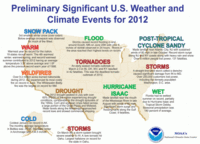
Throughout 2012, the United States was battered by severe weather events such as hurricanes and droughts that affected both pocketbooks and livelihoods. Research suggests that in the coming years, U.S. five-day forecasts will show greater numbers of extreme weather events, a trend linked to human-driven climate change.
-
-
Russia meteor a “once every 100 years” event
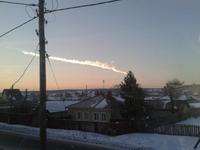
The meteor which disintegrated in the skies over Chelyabinsk, Russia, early Friday morning entered the atmosphere at about 40,000 mph (18 kilometers per second). The energy released by the impact was in the hundreds of kilotons.The meteor is the largest reported since 1908, when a meteor hit Tunguska, Siberia.
-
-
System to vaporize asteroids that threaten Earth

As an asteroid roughly half as large as a football field — and with energy equal to a large hydrogen bomb – flew by Earth on Friday, two California scientists unveiled their proposal for a system that could eliminate a threat of this size in an hour. The same system could destroy asteroids ten times larger than the one known as 2012 DA14 in about a year, with evaporation starting at a distance as far away as the Sun.
-
-
Natural disasters have pushed Australia’s disaster insurance sky high
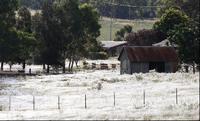
As natural disasters and superstorms become more frequent in Australia, the insurance rates for people who live and work in vulnerable areas have skyrocketed to the point where people may have no choice but to go uninsured.
-
-
Lessons from the 2010-11 Australia floods
New research has come up with ways quickly to assess flood damage to houses while also showing most people did not intend to make changes to reduce their vulnerability after the 2010-11 Australia floods. Two separate reports show how lessons learned from households affected by the 2010-11 Australian floods can minimize damage under current and future climates.
-
-
Sediment carried by 2011 Mississippi flood shored up Louisiana’s wetlands
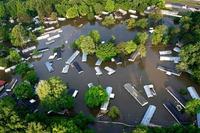
The spring 2011 flood on the Mississippi was among the largest floods ever, the river swelling over its banks and wreaking destruction in the surrounding areas. A new study also shows, however, that the floods reaped environmental benefits — transporting and laying down new sediment in portions of the Delta — that may help maintain the area’s wetlands.
-
-
Cleanup starts after Mississippi tornado, storms
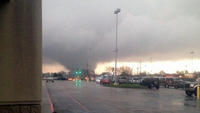
Emergency officials in Mississippi spent Monday dealing with the damage after a number of storms and a tornado ripped through the southern section of the state, injuring at least sixty people. No deaths were reported.
-
-
Northeast U.S. digs out after deadly snowstorm
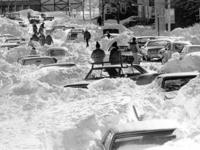
About 250,000 homes and businesses in northeast United States remain remained without power this morning as a blizzard dumped more than three feet of snow on north-mid-Atlantic and New England states, and parts of Canada. The death toll was at fifteen. Utilities in New England said the storm could leave some customers in the dark at least until Tuesday. About 650,000 lost power in eight states at the height of the storm.
-
More headlines
The long view
Trump Aims to Shut Down State Climate Policies
President Donald Trump has launched an all-out legal attack on states’ authority to set climate change policy. Climate-focused state leaders say his administration has no legal basis to unravel their efforts.
